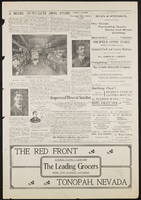Search the Special Collections and Archives Portal
Search Results
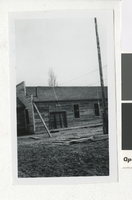
Photograph of town hall, Alamo (Nev.), 1910s - 1930s
Date
Archival Collection
Description
Image
Nevada Mining Photograph Collection
Identifier
Abstract
The Nevada Mining Photograph Collection depicts mining activities, miners, and mining towns in Nevada from 1868 to 1937. The photographs primarily depict the towns of Tonopah, Nevada and Goldfield, Nevada, including mills, buildings, mine shafts, and panoramic views of the landscape. The photographs also depict Beatty, Lost City, Delamar, Candelaria, Winnemucca, Virginia City, Rhyolite, Elko, and Reno, Nevada. The photographs also include portraits of early settlers in Nevada, Native Americans, children, parades, celebrations, and funerals.
Archival Collection
James E. Deacon Pupfish Research Files
Identifier
Abstract
The James E. Deacon Pupfish Research Files (approximately 1960-2015) contain files kept by James E. Deacon, who was a faculty member in the biological sciences and environmental studies department at the University of Nevada, Las Vegas. The collection primarily contains research files and audiovisual recordings about the Devils Hole pupfish, an endangered species of desert fish only found in Nevada. Also included are copies of Deacon’s testimony and reports for a hearing from 2011 on the probable groundwater pumping by the Southern Nevada Water Authority in Spring, Cave, Dry Lake, and Delamar Valleys (SCDD) in Nevada. The SCDD files also contain copies of exhibits referenced by Deacon in his initial and rebuttal reports for the hearing.
Archival Collection
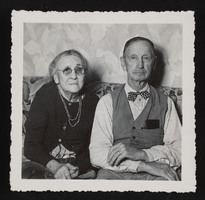
Mr. and Mrs. Ed Dula sitting on a couch in Caliente, Nevada: photographic print
Date
Archival Collection
Description
Image
Wright, John Peter, Sr., 1870-1903
John Peter Wright Sr. was born August 24, 1870 in Pioche, Nevada. He later died January 7, 1903 in Delamar, Nevada.
https://www.findagrave.com/cgi-bin/fg.cgi?page=gr&GRid=19571925
Person
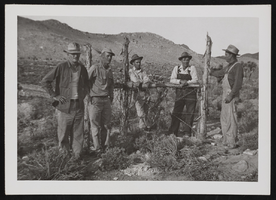
Five men standing around fence in desert landscape: photographic print
Date
Archival Collection
Description
Image
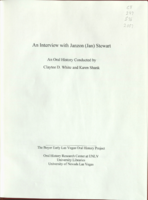
Transcript of interview with Jan Stewart by Claytee White, June 28, 2010
Date
Archival Collection
Description
In 1901, Jan Stewart's grandfather William T. Stewart brought his family to Alamo, Nevada in Lincoln County and about 90 miles north of Las Vegas to ranch. Soon he and his wife were operating a livery stable. One of his customers was an executive with the Union Pacific Railroad for whom he provided transportation to Las Vegas, where the railroad owned a ranch referred to as the Old Ranch. In this narrative Jan recounts how his grandfather and later his father became managers of the Old Ranch and lived a just a few dozen yards from the Old Mormon Fort, a historic Las Vegas landmark. In addition to sharing stories of his family's history, he describes how the ranch was a unique place to group up, brought the family in contact with many community people and an occasional celebrity.
Text

Photograph of a building, Tonopah (Nev.), circa 1900
Date
Archival Collection
Description
Image
Bracken, Anna, 1883-1950
Anna Bracken was born in Eureka, Nevada and graduated from the University of Nevada. She later became a school teacher at Delamar. In 1905, she married head of Las Vegas Land and Water Company, Walter Bracken. She became a community leader alongside her husband and helped establish the first public library in Las Vegas. She later died on January 2, 1950.
Hopkins, A. D. “Walter Bracken,” Las Vegas Review-Journal. February 7, 1999. http://www.reviewjournal.com/news/walter-bracken.
Person

